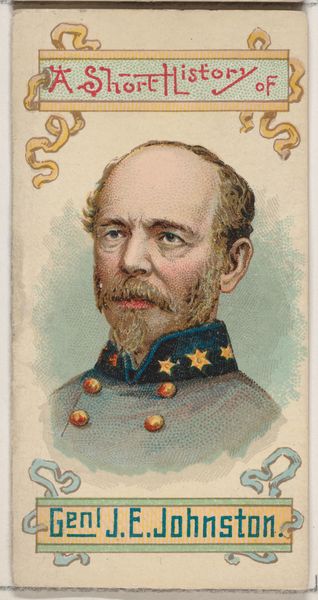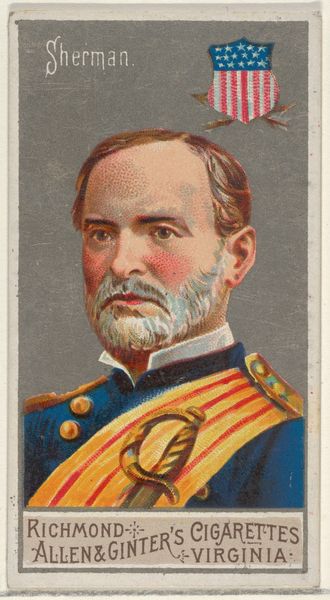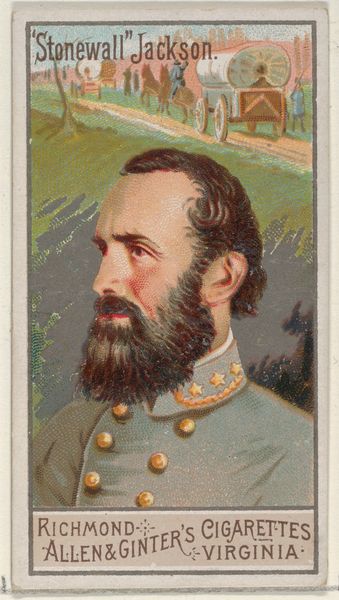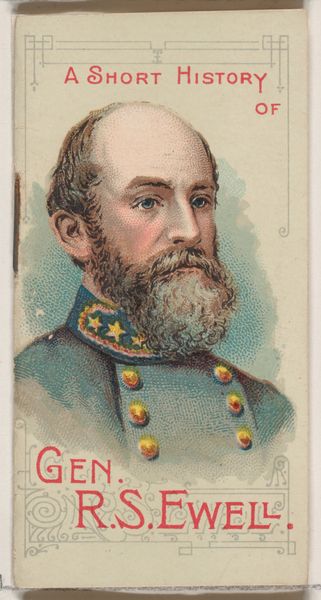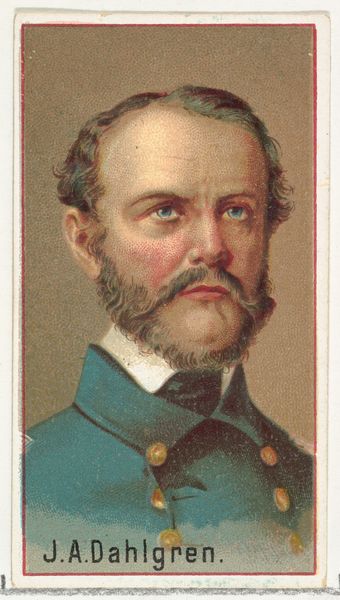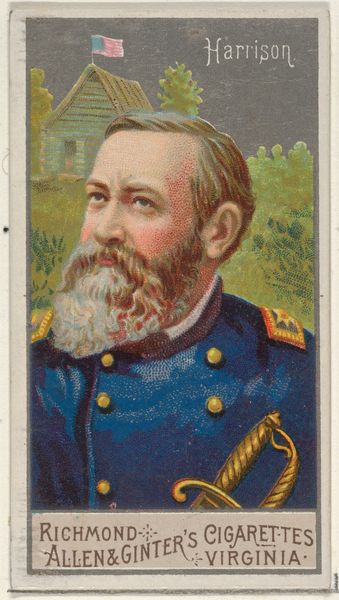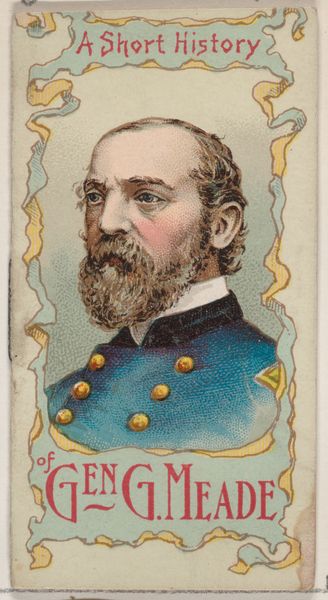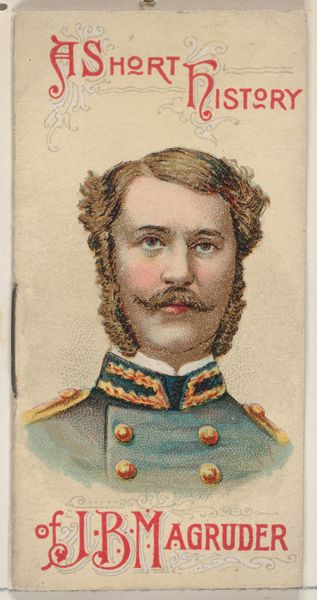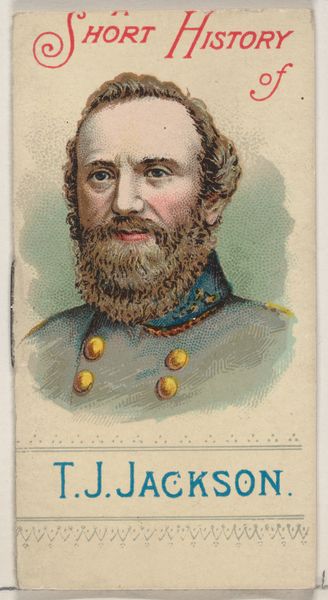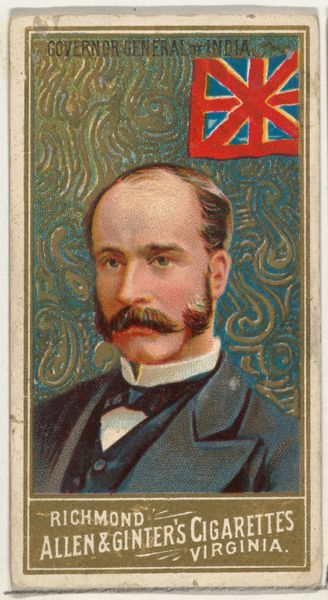
Joseph Eggleston Johnston, from the Great Generals series (N15) for Allen & Ginter Cigarettes Brands 1888
0:00
0:00
drawing, print
#
portrait
#
drawing
# print
#
impressionism
#
caricature
#
history-painting
#
academic-art
Dimensions: Sheet: 2 3/4 x 1 1/2 in. (7 x 3.8 cm)
Copyright: Public Domain
Editor: Here we have Joseph Eggleston Johnston from the Great Generals series by Allen & Ginter Cigarettes, dating back to 1888. It’s a small print, almost card-like, with Johnston’s portrait above a chaotic battle scene. I’m immediately struck by the contrast - the general's rather calm expression against the violence depicted above him. What do you make of this piece? Curator: It’s tempting to see it simply as a portrait within a series of "great" men, but context is key. This was produced over twenty years after the end of the Civil War. Allen & Ginter, a Richmond, Virginia, company, profited immensely in part through the Lost Cause narrative—a cultural framework minimizing slavery’s role, and idealizing Confederate figures, which in turn sanitized a history of racial terror and oppression. This seemingly innocent card actively participates in that revisionist project. How does that affect your initial reading now? Editor: That definitely shifts things. I saw a historical portrait, but now it feels more like propaganda, normalizing and even glorifying the Confederacy. I guess I’m wondering, is there anything redeemable in seeing the artistry, even knowing its problematic context? Curator: It's important to analyze *how* this image conveys meaning. The general's controlled demeanor alongside the chaos allows for a specific kind of hero-worship. Consider also the star insignia on his uniform - blatant symbols of Confederate pride. Analyzing visual strategies alongside historical context lets us understand the insidiousness of how such imagery perpetuates harmful ideologies. Can art be separated from its context? Perhaps, but critical engagement demands that we acknowledge its potential political ramifications. Editor: So it’s about understanding the artist's choices, the company's motivations, and the impact on its contemporary audience, as well as today. It’s definitely much more than just a portrait in a series. Curator: Precisely. Recognizing this complexity allows us to engage with history more honestly and thoughtfully.
Comments
No comments
Be the first to comment and join the conversation on the ultimate creative platform.
